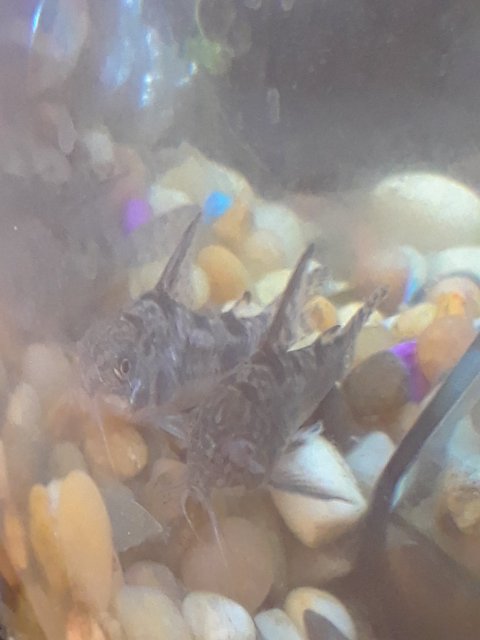Ropefish are highly predatory in nature, so some aggression is to be expected despite their docile demeanour. When I ordered 3 ropefish and a couple of bichirs after first buying that one rope at the lfs, the 3 ropes came in one small bag. I don't know what the hell that dingbat at the wholesaler was thinking, because these were all sized between 25 and 30 cm, and I doubt there could've even been two liters of water in the bag. For an overnight trip to Norway from Sweden. Anyway the largest of the ropes, a real fat one, arrived with almost his entire lower jaw freshly torn off although he was still kickin', while the middle size one died the day after from something I imagine might be internal injuries (it was really weird it behaved completely normal and then suddenly started coiling around dramatically and flipping out completely, for some 10-20 seconds. I didn't know if it was happy, angry, or in pain. Then it just died). I've also read a couple of reports of ropefish fighting and being territorial. Also it looks like ropefish babies, like other Polypterids, start out their lives by murdering and eating each other. Then there's the aspect of personality. So I wouldn't exactly be surprised if the ropefish ruined the cory's eye. That being said I've kept cories myself and have always wondered how they manage to not stab eachothers eyes out, this might well be the odd case.
Anyways as mentioned earlier the spikes of the cory might pose a problem for a potential predator, as if it fits into the predator's mouth it'll usually go in head first, anchoring itself like a fishhook and becoming very, very stuck. I actually read about a case where one fella saw his fish with a cory lodged in its throat, but the owner couldn't get the cory unstuck even after hours of careful effort, and both fish died. Polypterids are actually safer than most other fish in this regard owing to their robust make and unique gular plates, but this won't always prove enough. So with cories I say it's better to be safe than sorry. Some of the bigger species of cory will work with ropes and smaller bichirs for life, while the closely related Callichthys is also a great alternative. I have a couple in my bichir tank and they're great.
As for food, my polys will literally eat almost anything, as long as it's not veggies. Just like 8 year old me. They eat my gar's floating pellets, my butterfly fishes' crickets (before they ate the butterfly fish), and even some times they'll eat the suckerfishes' algae wafers. They also love the sinking pellets actually intended for them. I also always feed my tank market prawns a couple of times a week. It's more nutritious than almost anything else, whether you're human or bichir, and all my fish go crazy for it, even the gibby and ancistrus. When I had my butterfly fish I also learned that ropes absolutely love crickets, they come almost the second they hit the water. It's like they gleefully regocnize them from back home, like stumbling over a pizza place in some strange foreign country. Seeing as ropefish are wild-caught (although rumours of successful captive breeding are abound), it wouldn't surprise me if crickets were a staple of their diet as their habitats are very likely to overlap. I have a pair of leopard geckos and I often toss a couple of crickets in there as a treat.
Also a note on the "if it fits in the mouth" thing. With polys it usually means that if it fits in the mouth it will definitely be eaten, and it doesn't stop them from tearing stuff up and then eating it, as in the case of my butterfly fish. I know for certain that the polys dunnit as this was while I was away in the summer, before I got the gar and wolf fish, and prior to this the butterfly fish had bravely started laying claim to the entire surface of the tank. Anyway the jaws of the smaller Polypterid species (especially Senegalus and Polli, perhaps also the Palmas complex) are specifically designed to tear things to shreds, so as to better fit it in their mouths. This is also the purpose of the "death roll" they sometimes exhibit, and it's very effective. So with Polypterids as with many other predatory fish, it's important to choose tank mates that can stand up to themselves or at least have adequate defenses.
Oh and the mouths of Polyperids are much larger than they appear at first, they have very flexible jaws and their skulls actually flatten to widen the gape. I first learned this when I bought a small school of emperor tetras as dither fish, as they were quick and much wider than the mouths of my bichirs at the time, or at least so I thought. They all got eaten rather quickly, and I was almost amazed at how quickly my Polli swallowed one as I caught him in the act one morning.




